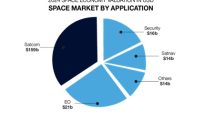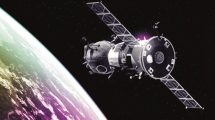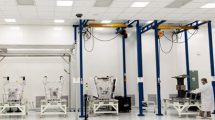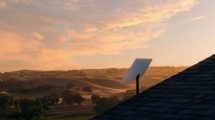 The Emirates Institution for Advanced Science and Technology (EIAST) recently unveiled the Super Resolution Tool. SatellitePro learns more about the technology from Saeed Al Mansoori, the Emirati engineer who developed it. Designed specifically for Dubai-Sat 2 imagery, Al Mansoori, Associate Image Processing Engineer in the Application Development and Analysis Centre at EIAST, explains how this new tool can do more than boost satellite images
The Emirates Institution for Advanced Science and Technology (EIAST) recently unveiled the Super Resolution Tool. SatellitePro learns more about the technology from Saeed Al Mansoori, the Emirati engineer who developed it. Designed specifically for Dubai-Sat 2 imagery, Al Mansoori, Associate Image Processing Engineer in the Application Development and Analysis Centre at EIAST, explains how this new tool can do more than boost satellite images
What are the limitations of satellite imagery?
Every optical remote sensing satellite has a specific resolution. If the imagery is zoomed in beyond a certain level, the image details will be blurred, resulting in information not being able to be extracted. Therefore, a high-resolution image is essential and to get such an image, a very complex sensor is needed with a high level of accuracy. However, this requires a lot of sensitive hardware devices and equipment, and is both challenging
and costly.
Are there ways to increase the resolution of an image?
Generally, there are three possible ways to increase the spatial resolution of the image: reduce the pixel size, increase the chip size, and super resolution. The first increases the number of pixels within the same unit area, which will increase the spatial resolution, but produce a level of Gaussian noise. In obtaining high-resolution images through hardware by increasing pixels, the density of image sensors (charge coupled device and complementary metal oxide) and chip size require high precision optics, which are
quite costly. The well-known approach to enhance image resolution is super resolution.
What does EIAST’s new Super Resolution Tool do?
The aim of the Super Resolution Tool is to construct a high-resolution enlargement of a low-resolution input image. This tool was designed to increase the number of pixels, leading to enhanced image features such as edges, boundaries or contrasts, making the digital image more useful for display and analysis. This will provide a detailed version of a given image that can be used in many real-time applications including image compression and communications, medical, feature extraction, satellite imaging, entertainment and HD TV.
How does the Super Resolution Tool work?
An image captured by the DubaiSat-2 satellite is used to recover a high-resolution version. This method is based on learning the correlation between low resolution and the corresponding high resolution patches from a database of known low- and high-resolution image pairs. For this tool, a special database is used.
The technical principle of the tool is focused on four basic steps: increasing the original image size by a factor of two, inserting a new set of pixels depending on the properties of the surrounding pixels and the mathematical interpolation relations represented by a digital database, sharpening the edges in the image using a matrix of 3×3, and finally improving the image by eliminating the noise caused by the
third step.
How long did it take to develop this tool?
I started developing this technology in 2013 and the project was completed in April 2014. In August last year, the idea of the project was presented at the SPIE Optics and Photonics conference held in San Diego in the United States. The tool’s principle was discussed with scientists and engineers specialising in this area and their feedback was taken into consideration when enhancing and developing the technique.
What types of images can the tool enhance?
Besides optically enhancing DubaiSat-2 satellite images, the tool was also applied to DubaiSat-1 images and it also performed well. However, the tool is useful not only for satellite imagery, it can be applied in medical applications including X-ray, radars and surveillance cameras, for example. For such cases, new parameters will play a role and minor modifications will be required.
To what limit can the tool enhance imagery?
The tool is designed to enhance image quality by increasing the number of pixels within an image by a factor of two. So if the image is 100×100 in size, it contains 10,000 pixels. Therefore, the enhanced image will be 200×200 in size, containing 40,000 pixels. This means that by applying this tool each pixel value in the original image is replaced by four enhanced pixel values.
Does your tool work on images of any resolutions?
Yes, the tool can be used across images of any resolution, but since it’s designed for DubaiSat-2, some parameters should be taken into consideration for other resolutions. When designing such a tool, we don’t focus on the original resolution alone but also on the application that it will be used for. The tool can be enhanced and modified with a combination of parameters to fit images of any resolution.












Add Comment